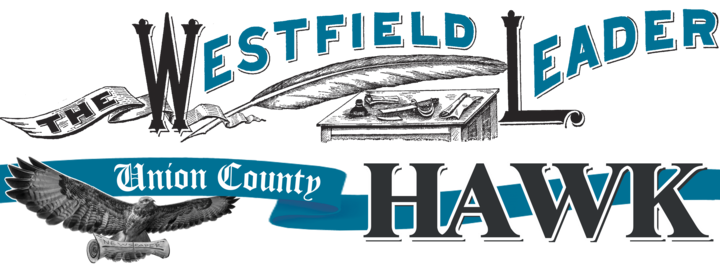WESTFIELD — For the past 134 years, the staff of The Westfield Leader has worked to provide readers with responsible news coverage and balanced reporting. The first issue rolled off the presses on September 5, 1890, and The Leader has been a fixture of the local community ever since.
In the early days of the publication, the front page was usually dedicated to national headlines and curious stories from around the country. And while some of these stories would not be considered politically correct or even especially newsworthy today (in 1907, for example, the Leader published a piece entitled “An Adventure With Indians” that details the writer’s run-in with a native tribe in Pawnee County, Kan.), they do paint a fascinating picture of American life and the language used to describe it.
Local stories, meanwhile, could usually be found on the second or third page and consisted largely of short, snapshot-type descriptions of political events, elections, crime reports and business openings.
One such piece from the same 1907 issue (the oldest one in the Leader’s surviving archive) reads “When Mayor J.W. Cory of Mountainside arose early Monday morning, he found everything topsy turvy and soon discovered that he had been robbed. His clothing was missing, his watch and chain were gone. A lot of sausage and nine quarts of milk had also disappeared.”
Later that same year, the Leader printed a short piece called “A Narrow Escape” that tells the story of four Westfield teens — two boys and two girls — who were almost run over by a train while walking along the Rahway Valley Line. Luckily, the article notes, they were able to “jump off a trestle and land in the mud” before any harm could come to them. The reporter ended the story by saying that the boys found the episode to be “a very funny one” but added that the girls were not anywhere near as amused.
A weekly column initially called “Additional Locals,” meanwhile, served as a kind of precursor to social media — local residents were invited to write in with short announcements, neighborhood gossip, party invitations and other pieces of small news that would all be printed under the same heading. These included announcements like “Mr. Redfern, of New York City spent the weekend with friends on Euclid Avenue,” “a little daughter was born to Mr. and Mrs. Harry Drew Egbert on Sunday at their residence on Kimball Avenue” and “Mrs. Harry Taylor has purchased a new grand piano.” Another, this one printed in 1916, reads “John J. Schmidt of Lenox Avenue will entertain the members of the Pinochle Club at his home this evening. John J. is a comparatively new member of the club, but they say he is some card player.”
And then, of course, there are the advertisements. Early editions of The Westfield Leader are filled with hand drawn ads for local businesses like Tepper Brothers Department Store in Plainfield (“A Safe Place To Shop”), Hahne and Company (which eventually became Lord & Taylor), The Scudder Meat Market (where “every pound is worth every penny”) and the People’s Bank and Trust Company of Westfield (“A Conservative Institution For Conservative People”).
Readers also can find ads for milkmen, Buster Brown shoes, clothing boutiques, grocery stores, horse saddles, miracle cures like Dr. Kennedy’s Favorite Remedy (“pleasant to take and welcome in every home”), piano tuners, upholsterers and even The Westfield Leader itself — “Are you a subscriber? If not, why not subscribe now for $2.00 per year.”
But even as the headlines grew more serious, The Leader always managed to find room for interesting snippets.
In 1928, on what was evidently a slow news day, one reporter wrote “Rats Eat Employee’s Lunch.” Joseph Caramanga, employed as a caretaker at the Westfield police station, is missing some sandwiches as a result of raids made on his lunch by rats. Caramanga laid his coat over a chair this morning and proceeded to his work of renovating the police station. When he returned, he discovered that the paper in which he had wrapped his sandwich was torn and that one of the sandwiches had been eaten by rodents.”
As Westfield grew from a quiet agricultural depot to the busy commuter town that it is today, the Leader grew with it. By the mid 1920s, the paper shifted its focus from national events to local news and began to concentrate more of its attentions on Union County happenings.
The stock market crash of 1929, for example, did not make frontpage news in Westfield (that week’s headlines were dedicated to the local council race instead), but evidence of the Great Depression can be clearly seen in later issues in local stories about foreclosures, food insecurity and skyrocketing rates of homelessness throughout the region.
In December of 1941, The Leader dedicated its front page to the Pearl Harbor bombings, noting “Many Westfield Men Face Attack In War Zone” and “More Men Sought By Draft Board.” The same issue details instructions for responding to an air raid siren and explains that local schoolchildren will start participating in evacuation drills.
From that point forward, the Leader would go on to localize global events like World War II, the Vietnam War, the September 11 terrorist attacks and the Covid-19 pandemic by telling the stories of the men, women, soldiers and students from around the area who lived through each event.
As the saying goes, “all news is local news.”
Of course, Westfield and the surrounding communities have made their own headlines over the years as well. From political scandals and infamous murders to community projects, contested developments, local celebrities and technological advancements, The Westfield Leader has covered it all.
A nearly-complete digitized archive of The Westfield Leader that dates back to 1907 can be found under the Local History Archive tab of the Westfield Memorial Library’s homepage at wmlnj.org.



